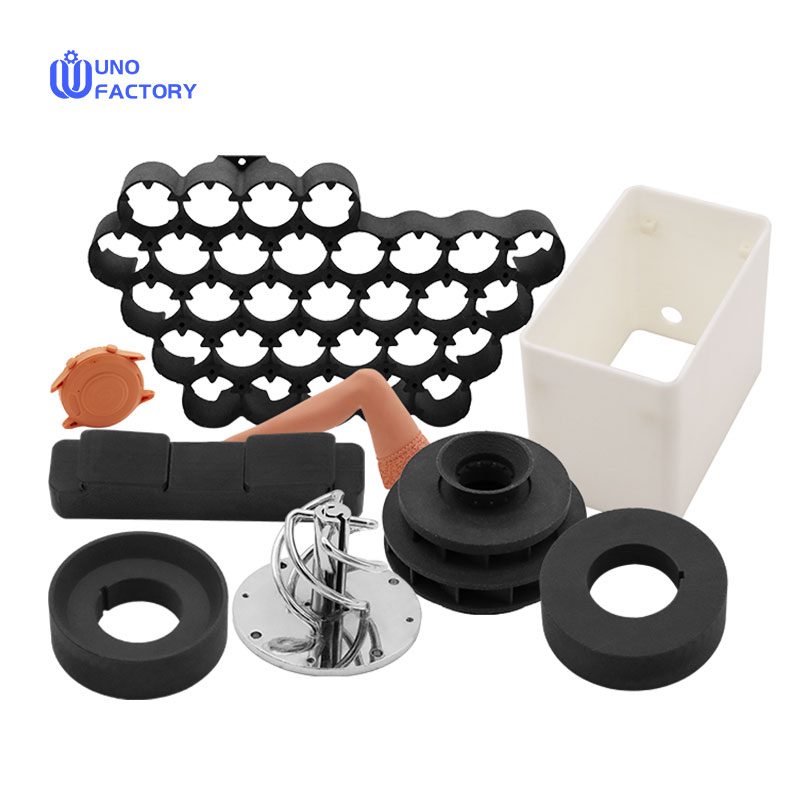Time to read: 6 min

Explore the transformative impact of 3D printing on the medical field, from its inception to the cutting-edge applications that are redefining patient care and surgical precision.
The integration of 3D printing in healthcare has ushered in an era of personalized medicine, where the one-size-fits-all approach is being replaced by tailored solutions that cater to the unique needs of each patient. This article delves into the evolution of medical 3D printing, its benefits, core technologies, and the diverse applications that are enhancing surgical outcomes and improving patient experiences.
The Evolution of Medical 3D Printing: From its early days as an educational tool to its current status as a cornerstone of modern medicine, 3D printing has come a long way. The technology's ability to produce custom implants, prosthetics, and pharmaceuticals has revolutionized patient care, offering solutions that are not only effective but also efficient in terms of recovery and post-operative complications.
Benefits of 3D Printing in Healthcare: The customization offered by 3D printing is unparalleled, ensuring a perfect fit for prosthetics, dental implants, and pharmaceuticals. The technology's precision in creating complex structures is particularly advantageous in surgical planning and education. Moreover, 3D printing has improved the functionality of medical devices, leading to better mobility and comfort for patients.
Core Technologies Behind Medical 3D Printing: Understanding the core technologies of 3D printing is crucial to appreciating its capabilities. From Stereolithography (SLA) to Fused Deposition Modeling (FDM) and Bioprinting, each technology serves specific medical applications, ranging from creating detailed surgical models to fabricating living tissues for regenerative medicine.
Materials in Medical 3D Printing: The choice of materials is critical in medical 3D printing, with polymers, metals, ceramics, and bio-materials each playing a role in ensuring the safety, biocompatibility, and effectiveness of the final product.
Applications of 3D Printing in Medicine: The applications of 3D printing in the medical field are vast and varied, from customized prosthetics and orthopedic implants to surgical instruments, bioprinting, dental applications, and personalized medical devices.
Challenges and Safety Concerns: While the benefits are significant, the challenges of regulatory compliance, research and development, quality control, and cost implications cannot be overlooked. However, with stringent safety measures and regulatory oversight, 3D printing in medicine is proving to be a secure and transformative force in healthcare.
Unofactory: Your Partner in Medical 3D Printing Excellence: Partnering with a manufacturing facility like unofactory, which is certified and experienced in medical 3D printing, ensures that your healthcare needs are met with precision, reliability, and adherence to the highest industry standards.
3D printing in healthcare, medical advancements, personalized medicine, patient care, surgical precision, medical 3D printing technologies, bioprinting, FDA compliance
Title: "Revolutionizing Healthcare: The Surge of 3D Printing in Medical Advancements"
Summary: This article explores how 3D printing is reshaping the medical field, offering personalized care and innovative solutions that enhance patient outcomes and surgical accuracy.
Body: The convergence of 3D printing and healthcare marks a new epoch where individualized solutions are supplanting generic treatments. From its origins to its current pivotal role in medical innovation, 3D printing has been pivotal in advancing patient care through customized implants, prosthetics, and medications. The technology's evolution, benefits, underlying technologies, and applications are examined, highlighting its transformative effect on surgical procedures and patient experiences.
The Evolution of Medical 3D Printing: 3D printing's journey from an educational aid to an essential component of contemporary medicine is noteworthy. Its capacity to fabricate bespoke implants, prosthetics, and pharmaceuticals has been a game-changer in healthcare, providing effective and efficient solutions that minimize post-operative complications and enhance recovery rates.
Benefits of 3D Printing in Healthcare: The customization capabilities of 3D printing are unmatched, offering a perfect fit for prosthetics, dental implants, and personalized medications. The technology's precision in crafting complex structures is particularly beneficial for surgical planning and educational purposes. Furthermore, 3D printing has enhanced the functionality of medical devices, leading to improved mobility and comfort for patients.
Core Technologies Behind Medical 3D Printing: A grasp of the foundational technologies of 3D printing is essential to understanding its potential. Technologies such as Stereolithography (SLA), Fused Deposition Modeling (FDM), and Bioprinting cater to specific medical applications, from creating intricate surgical models to fabricating living tissues for regenerative medicine.
Materials in Medical 3D Printing: Material selection is a critical aspect of medical 3D printing, with polymers, metals, ceramics, and bio-materials each ensuring the safety, biocompatibility, and efficacy of the final product.
Applications of 3D Printing in Medicine: The spectrum of 3D printing applications in medicine is broad and diverse, encompassing customized prosthetics, orthopedic implants, surgical instruments, bioprinting, dental applications, and personalized medical devices.
Challenges and Safety Concerns: While the advantages are considerable, challenges such as regulatory compliance, research and development, quality control, and cost implications are significant. Yet, with rigorous safety protocols and regulatory oversight, 3D printing in medicine is a secure and revolutionary advancement in healthcare.




